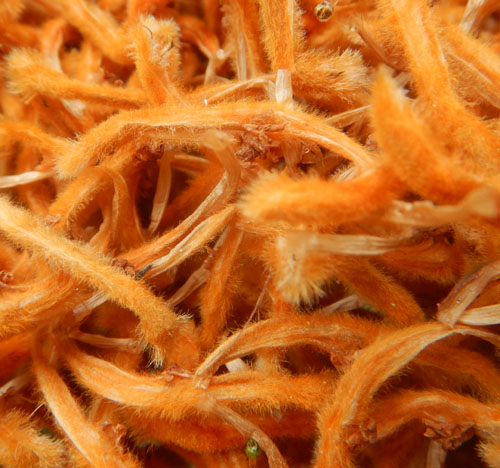Wilde Dagga (Leonotus leonurus), packet of 10 seeds, organic
$4.95
Family: Mint (Lamiaceae)
Hardy to Zones 9 to 12
(Wild dagga, Lion’s Tail, Lion’s Ears, Umunyane) Herbaceous or woody perennial. When growing in colder zones, these can be very late to re-emerge from the woody stumps of the previous year’s growth. Flowers in the late season on multiple upright stalks, occurring as long-tubed, hairy appendages emerging from the globose, whorled orbs. Hummingbirds become frenzied around this plant, and I’ve had them fly in through the door of the greenhouse (and risk hitting their little heads) in order to repeatedly visit a single flower that was making an out-of-season display. Easily one of the showiest medicinals of all time. Native to South Africa and planted in discriminating botanical gardens worldwide. When encountered on garden path, it is a breathtaker. Traditional usage (African tribal): The orange flowers are a smokable euphoric, source of phytocannabinoids. The leaf material was traditionally used as a poultice or decoction for treating insect stings and bites of venemous snakes, wounds, boils, eczema and other skin diseases. Taken internally for the treatment of malaria, diabetes, also demonstrating a cardiotonic and hypotensive effect. Coughs, colds, influenza, bropnchitis, asthma and viral hepatitis. Source of diterpenoic marrubiin. Plant prefers full sun to part shade and regular garden or wayside conditions. Since the stems can become quite woody, it holds up well to traffic and random abuse. Well-drained, slightly alkaline soils seem to be the best choice, although almost any soil will work as long as the summer is hot and long. The plant is quite drought tolerant. Sow seeds in a flat or pot. Barely cover, tamp well, keep evenly moist, warm and in the light until germination, which occurs in 1 to 3 weeks. The seedlings are valuable and so normally not thinned–grow at close spacing for a few weeks until the second set of true leaves has formed, then prick into pots, and then after they grow out a bit more, transplant outdoors to 3 feet apart. In cold weather areas, you may wish to keep this plant in potted culture.
10 seeds per packet, certified organically grown
Out of stock








Question
Colleen –
Hi, I’m currently growing L. nepetifolia because it’s all I could find until now. (Your selection is amazing!) I’ve heard L. leonurus is medically superior, but I’m wondering if it’s as painfully stabby as klip dagga? Also does it spread as profusely? My zone 10 garden is full of stabby klip dagga plants now….
Upvote if this was helpful (0) Downvote if this was not helpful (0) Watch Unwatch Flag for removal
Richo Cech –
hi colleen, i’m pretty sure its the dried receptacle of klip dagga, the rounded portion left over after the flowers dehisce, that you’re talking about, that is pokey. The true wilde dagga (Leonotis leonurus) is not so pokey, I’ve been squeezing out seeds all morning and haven’t been poked once. As a perennial, the true wilde dagga is clump-forming and i’ve never seen it volunteer–it is the annual species that like to do that. r
Upvote if this was helpful (0) Downvote if this was not helpful (0) Flag for removal
A.N. –
Hello, between L nepetifolia or L leonurus, is one easier to grow than the other (apart from zone)? Also, are medicinal uses the same for both? thanks!
Upvote if this was helpful (0) Downvote if this was not helpful (0) Flag for removal
Richo Cech –
Hello A.N., Thanks for writing! The nepetifolia is easier to grow and faster to flower. The flowers of leonurus and nepetifolia are hard to tell apart and have the same functionality. richo
Upvote if this was helpful (0) Downvote if this was not helpful (0) Flag for removal
jasperdshide (verified owner) –
I found the seeds a bit finicky to get started – warmth and light seem to be key and it may be beneficial to provide cooler nighttime temperatures too. Seedlings can be acclimated to drier conditions pretty quickly and it’s hard to overstate how quick these plants grow, especially when given rich soil or fertilizer. They’ll get absolutely massive if you let them so plan accordingly!
Upvote if this was helpful (0) Downvote if this was not helpful (0) Watch Unwatch Flag for removal
Sean R Brown –
I grow it as an annual in central illinois. I had it come back from seed after growing it in 17. It came back but very late and didnt flower in 18
Upvote if this was helpful (0) Downvote if this was not helpful (0) Watch Unwatch Flag for removal